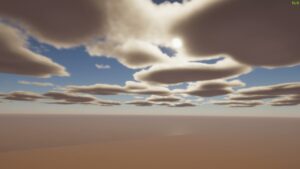Create Clouds in Unity Shader Graph
In Unity’s Shader Graph, you can create and edit clouds in several ways. For example, you can make a Cloud2D shader that populates the sky with moving clouds. You can also edit the cloud’s look by animating it. This feature is helpful for creating realistic clouds that look like they are approaching the camera.
To create clouds, you can use a single or dual-plane method, such as raymarching. However, if your world is large, the ray-sphere intersection is the most effective. Using a for-loop, you can step along the ray and multiply the result by a density value that controls the cloud’s opacity.
A CloudRenderer component must have a CloudUniqueID that is unique and does not conflict with other CloudSettings. The CloudRendererType attribute is used to determine the renderer used to render the clouds. It is also used to determine when the sky reflection cubemap should be re-rendered.
The number of steps used to evaluate clouds’ lighting and transmittance affects the amount of light that can travel through them. Higher values increase the intensity of the effect. Lower values reduce ambient light and produce darker clouds. Another important parameter to consider is the Erosion Factor. This is an important factor in ambient occlusion and is editable in Advanced Mode and Manual Mode.
The procedural volumetric unity cloud shader is an effective method to render clouds and other objects that reflect them. This method can be used to create realistic clouds with realistic real-time reflections. The tutorials also show how to access the Unity particle system and create custom effects.

How to Create Clouds in Unity Shader Graph
There are several different ways to create clouds in Unity. You can use the HDRP internal lookup table or generate a texture map by selecting various properties in the Scene’s Clouds property. Each method allows you to generate different cloud types. By modifying the cloud maps, you can render shadows, volumetric light and fog.
A tutorial based on the Shader Graph will show you the fundamentals of the technique. You will learn how to use each node and how to connect them to create different effects. Then, you can move on to combining and using them to create more complex effects. Shaders have two types of nodes. One is the Normal node family, which is necessary for normal mapping. Another is the Object node. Both of these nodes accept a number of channels, and they are both used for converting between Object and Tangent spaces.
There are 60+ videos in the Shader Graph tutorial. Each one covers the various nodes used to render different effects. Some nodes are more useful than others, and learning more about them is helpful. Once you learn the basics, you can move on to more advanced techniques.
Shaders in Unity work with vertex-stage and fragment-stage rasterization. The vertex stage converts a screen into a set of fragments, each fragment typically one pixel-wide but may be sub-pixel-wide. Fragments are then manipulated using blocks that operate on each pixel. The Base Color is the color of the object before any effects are applied.